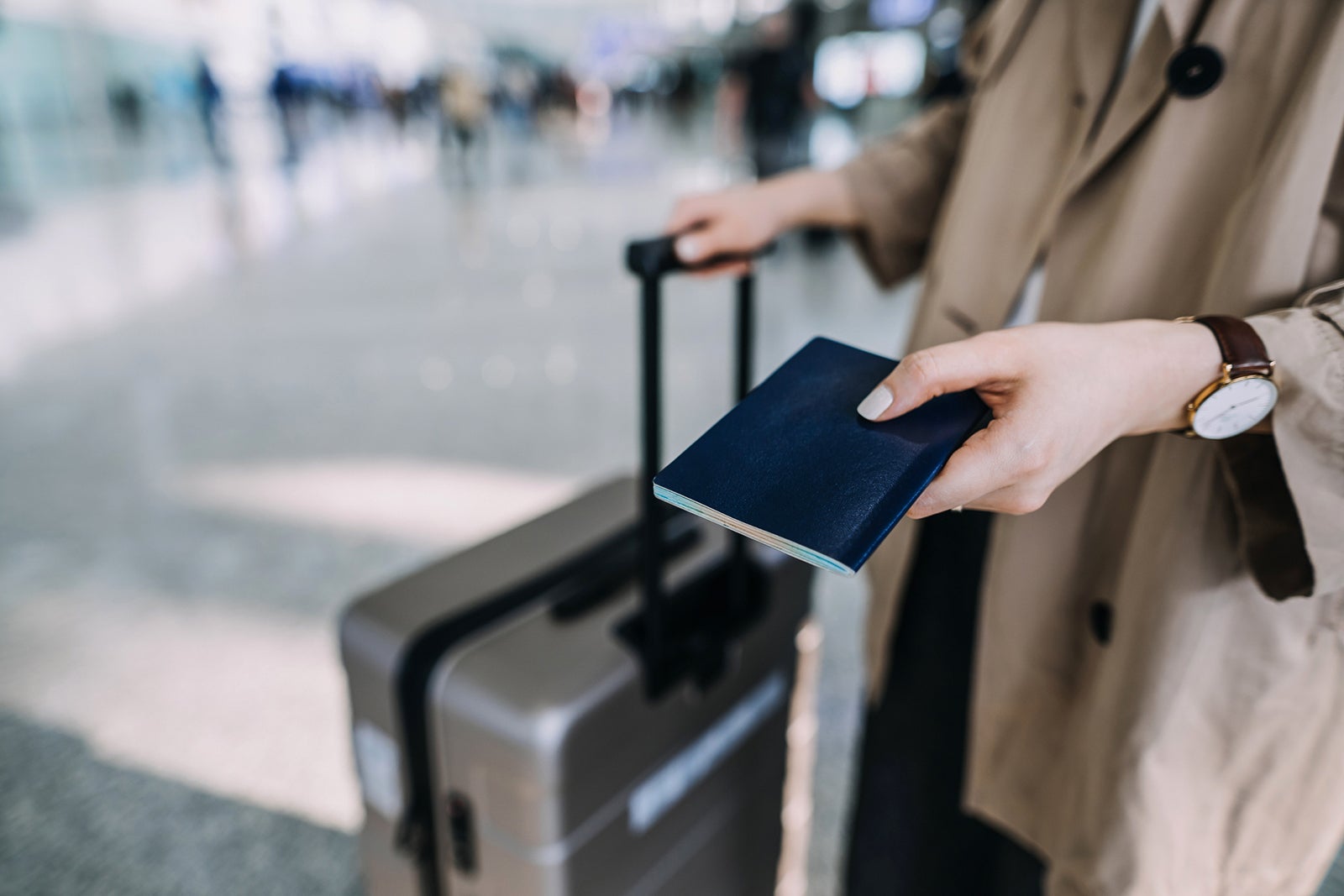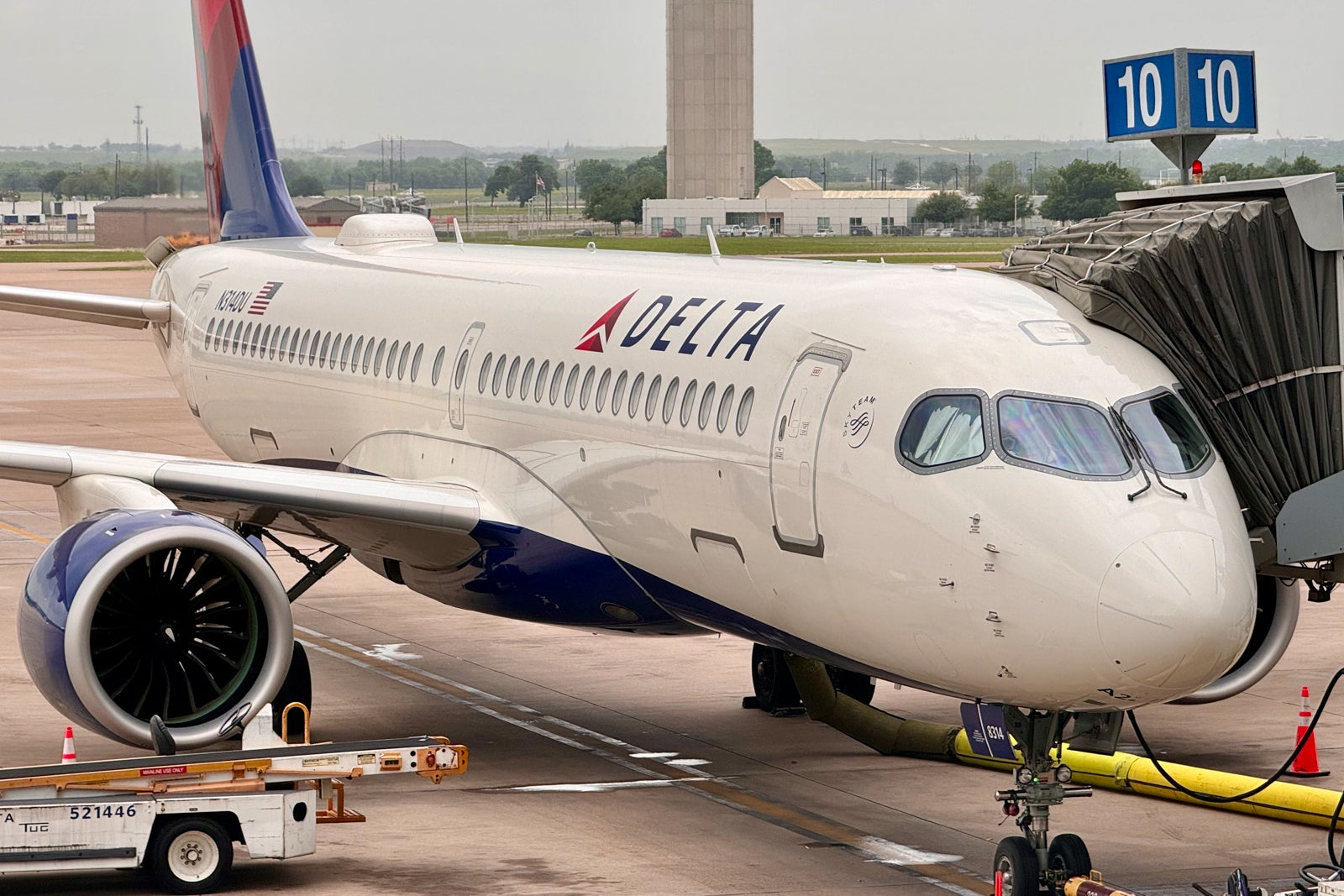Is it more expensive to book flights through a credit card travel portal?
Many top travel rewards cards offer bonus rewards when you book flights, hotels and rental cars through their travel portal.
For example, the Chase Sapphire Preferred® Card offers 5 points per dollar spent on travel purchased through Chase Travel℠ but just 2 points per dollar spent on other travel, including flights booked directly with airlines.
So, you might consider booking flights through a credit card travel portal when you plan your next trip. However, many travelers believe you’ll often pay more for flights when booking through a credit card travel portal. Plus, you can earn bonus rewards on select airline credit cards if you use them to book directly with the airline.
But are flights actually more expensive when you book through a credit card travel portal? We collected and then crunched over 750 data points to find out.
What data did we collect?
For this story, we collected 785 data points to determine whether flights are more expensive on average when you book through a credit card travel portal. Specifically, we collected fares across 157 round-trip flight itineraries.
For each itinerary, we defined the specific flight numbers, travel dates and cabin class — basic economy, main cabin economy, premium economy or business class — and then asked TPG staffers to collect fares across the following booking methods as quickly as possible (always within a four-hour window):
Half of the travel dates for our itineraries were about two months out, while the other half were about six months out. Almost all of the itineraries we considered originated in the U.S., with 40% of our data points being domestic flights and 58% being flights within North America. Now, let’s dive into what we found.
Related: How to decide when to use cash or miles for buying airline tickets

Daily Newsletter
Reward your inbox with the TPG Daily newsletter
Join over 700,000 readers for breaking news, in-depth guides and exclusive deals from TPG’s experts
Key takeaways
If you’re only interested in the highlights, here’s a summary of the most important takeaways:
- Not every itinerary is bookable through each credit card travel portal.
- Chase Travel sold the highest percentage of the itineraries we searched; Amex Travel sold the lowest.
- Compared to booking directly, fares are, on average, slightly less expensive through Chase Travel, slightly more expensive through Capital One Travel and Amex Travel and much more expensive through Citi Travel.
- Capital One Travel returns the same fare as booking directly more than half the time. Amex Travel and Chase Travel return the same fare as booking directly less than half the time, while Citi Travel rarely returns the same fare as booking directly.
- To get the best flight price, you should check each portal you can access and compare these rates with what the airline charges for direct bookings.
We learned plenty more interesting things while analyzing our data. So, read on for more statistics and a deeper analysis of what we learned.
Related: 11 strategies to find cheap airfare
Is it more expensive to book flights through a travel portal?
Booking flights through a credit card travel portal is sometimes more expensive but sometimes cheaper. The only portal that was often more expensive to book flights through compared to booking directly was the Citi Travel portal.
We crunched data from 157 round-trip itineraries and calculated the average difference between each portal’s pricing and booking directly. Here’s what we found:
- Amex Travel portal: 1.19% more expensive than booking directly
- Capital One Travel portal: 0.05% more expensive than booking directly
- Chase Travel portal: 0.44% less expensive than booking directly
- Citi Travel portal: 9.32% more expensive than booking directly
Here’s a look at the number of itineraries that were equal to, more expensive than or less expensive than what you could book directly with the airline.
| The number of itineraries that had … | Amex Travel | Capital One Travel | Chase Travel | Citi Travel |
|---|---|---|---|---|
| The same fare through the portal and when booking directly | 68 | 83 | 65 | 29 |
| A more expensive fare through the portal compared to booking directly | 27 | 23 | 33 | 74 |
| A fare at least 1% more expensive through the portal compared to booking directly | 24 | 20 | 26 | 44 |
| A fare at least 10% more expensive through the portal compared to booking directly | 7 | 8 | 5 | 26 |
| A less expensive fare through the portal compared to booking directly | 26 | 25 | 39 | 29 |
| A fare at least 1% less expensive through the portal compared to booking directly | 20 | 14 | 27 | 23 |
| A fare at least 10% less expensive through the portal compared to booking directly | 7 | 8 | 10 | 7 |
As you can see, the Chase Travel portal — the only credit card portal we considered that performed better on average than booking directly in our experiments — also featured the most itineraries where we found less expensive fares through the portal than booking directly.
Meanwhile, fares for 74 itineraries were more expensive through the Citi Travel portal than booking directly. In 26 instances, the Citi Travel portal returned prices more than 10% higher than you’d get booking directly. One such itinerary involved flying All Nippon Airways in economy between Los Angeles and Tokyo in December. The cost for this itinerary through Citi Travel was about $5,300 while booking directly would cost about $1,400.
Now, let’s discuss some of these metrics when looking at subsets of our data set. In particular, we’ll discuss domestic, international and economy flight trends.
Related: The best time to book flights for the cheapest airfare
Trends for domestic flights
The average difference between each portal’s pricing and booking directly for the 61 round-trip domestic itineraries we considered is as follows:
- Amex Travel portal: 2.68% less expensive than booking directly
- Capital One Travel portal: 0.37% more expensive than booking directly
- Chase Travel portal: 0.07% more expensive than booking directly
- Citi Travel portal: 0.22% more expensive than booking directly
Here’s a look at the number of domestic itineraries that were equal to, more expensive than or less expensive than what you could book directly with the airline.
| The number of domestic itineraries that had … | Amex Travel | Capital One Travel | Chase Travel | Citi Travel |
|---|---|---|---|---|
| The same fare through the portal and when booking directly | 24 | 42 | 29 | 10 |
| A more expensive fare through the portal compared to booking directly | 4 | 9 | 10 | 28 |
| A fare at least 1% more expensive through the portal compared to booking directly | 3 | 8 | 7 | 9 |
| A fare at least 10% more expensive through the portal compared to booking directly | 0 | 1 | 0 | 1 |
| A less expensive fare through the portal compared to booking directly | 11 | 1 | 13 | 5 |
| A fare at least 1% less expensive through the portal compared to booking directly | 11 | 1 | 1 | 3 |
| A fare at least 10% less expensive through the portal compared to booking directly | 3 | 1 | 1 | 1 |
In our tests, domestic fares through the Amex Travel portal were an impressive 2.68% less expensive than booking directly, with three fares even being 10% less expensive. One of these fares was for a round-trip itinerary from Los Angeles to New York in December with nonstop flights in both directions. For this itinerary, we could book through Amex Travel for $612. Meanwhile, Capital One Travel wasn’t selling the itinerary, and booking directly or via Chase Travel or Citi Travel carried fares of roughly $762.
Some TPG staffers reported seeing Insider Fares for some of the Amex itineraries we searched, but because Insider Fares only apply when you redeem Amex points for your entire fare, we did not include Insider Fares in the rates we collected for these itineraries.
Related: 9 things to consider when choosing to book via a portal vs. booking directly
Trends for international flights
The average difference between each portal’s pricing and booking directly for the 96 round-trip international itineraries we considered is as follows:
- Amex Travel portal: 3.02% more expensive than booking directly
- Capital One Travel portal: 0.52% more expensive than booking directly
- Chase Travel portal: 0.75% less expensive than booking directly
- Citi Travel portal: 13.72% more expensive than booking directly
Here’s a look at the number of international itineraries that were equal to, more expensive than or less expensive than what you could book directly with the airline.
| The number of international itineraries that had … | Amex Travel | Capital One Travel | Chase Travel | Citi Travel |
|---|---|---|---|---|
| The same fare through the portal and when booking directly | 44 | 41 | 36 | 19 |
| A more expensive fare through the portal compared to booking directly | 23 | 14 | 23 | 46 |
| A fare at least 1% more expensive through the portal compared to booking directly | 21 | 12 | 19 | 35 |
| A fare at least 10% more expensive through the portal compared to booking directly | 7 | 7 | 5 | 25 |
| A less expensive fare through the portal compared to booking directly | 15 | 24 | 26 | 24 |
| A fare at least 1% less expensive through the portal compared to booking directly | 9 | 13 | 26 | 20 |
| A fare at least 10% less expensive through the portal compared to booking directly | 4 | 7 | 9 | 6 |
Citi Travel, by far, had the fewest itineraries for which the fares through the portal were equal to those found directly with the airline. The Citi Travel portal also showed fares at least 10% more expensive through the portal compared to booking directly for 25 itineraries, which is 26% of the international itineraries we considered.
Meanwhile, Chase Travel featured fares for the international itineraries we considered that were 0.75% less expensive, on average, than booking directly. Out of all the international fares that were less expensive through Chase Travel than booking directly, each fare was at least 1% less expensive. For example, round-trip WestJet flights from Los Angeles to Vancouver, British Columbia, on two different dates cost $431 through Chase Travel but $459 through every other booking method we considered.
Related: What you need to know about direct versus third-party travel bookings
Trends for economy flights
The average difference between each portal’s pricing and booking directly for the 109 round-trip economy itineraries we considered is as follows:
- Amex Travel portal: 0.70% less expensive than booking directly
- Capital One Travel portal: 0.16% more expensive than booking directly
- Chase Travel portal: 0.66% less expensive than booking directly
- Citi Travel portal: 7.15% more expensive than booking directly
Here’s a look at the number of economy itineraries that were equal to, more expensive than or less expensive than what you could book directly with the airline.
| The number of economy itineraries that had … | Amex Travel | Capital One Travel | Chase Travel | Citi Travel |
|---|---|---|---|---|
| The same fare through the portal and when booking directly | 44 | 60 | 39 | 16 |
| A more expensive fare through the portal compared to booking directly | 18 | 19 | 24 | 51 |
| A fare at least 1% more expensive through the portal compared to booking directly | 16 | 17 | 19 | 29 |
| A fare at least 10% more expensive through the portal compared to booking directly | 3 | 7 | 3 | 15 |
| A less expensive fare through the portal compared to booking directly | 17 | 18 | 30 | 20 |
| A fare at least 1% less expensive through the portal compared to booking directly | 15 | 14 | 21 | 18 |
| A fare at least 10% less expensive through the portal compared to booking directly | 7 | 8 | 8 | 6 |
Economy fares through Chase Travel and Amex Travel were around 0.7% less expensive than booking directly. Thirty economy itineraries, or about 28% of the economy itineraries we considered, were less expensive through the Chase Travel portal than booking directly. Meanwhile, 17 economy itineraries were less expensive through the Amex Travel portal than booking directly.
Compared to other credit card travel portals, Citi Travel featured the fewest economy itineraries with the same fare as booking directly and more than double the next-worst portal’s number of economy itineraries that were more expensive when booking through the portal. Fifty-one of the economy itineraries — 47% of the economy itineraries we considered — were more expensive through the Citi Travel portal than booking directly with the airline.
Related: 6 key tools and tips to find the cheapest airfare
What is the best credit card travel portal for booking flights?
There isn’t one best credit card travel portal for booking flights. However, I appreciate the Capital One Travel portal’s price drop protection on flights for which the platform recommends booking immediately, and I’ve gotten value from Amex’s International Airline Program.
Fares
Our data showed Amex Travel was, on average, less expensive than booking directly for domestic itineraries. Meanwhile, Amex Travel and Chase Travel were both, on average, less expensive than booking directly for economy itineraries. Chase Travel was, on average, less expensive than booking directly for international itineraries, too.
Citi Travel featured higher fares, on average, than those available when booking directly with the airline. Specifically, 47% of itineraries were more expensive through Citi Travel than booking directly. Compare this to the other travel portals, where only 21% were more expensive through Chase Travel, 17% were more expensive through Amex Travel and 15% were more expensive through Capital One Travel.
Bookable itineraries
The main drawback of Amex Travel is that it does not have every itinerary you could book directly; this is more frequently the case with Amex Travel versus the other portals we considered. Across the 157 round-trip itineraries we considered, 36 weren’t available through Amex Travel, 26 weren’t available through Capital One Travel, 25 weren’t available through Citi Travel and 20 weren’t available through Chase Travel.
In some cases, this was due to the portal not supporting a specific airline. For example, Spirit Airlines, Frontier Airlines and Viva Aerobus flights were only bookable through the Capital One Travel portal, and we only found Southwest flights bookable through the Chase Travel portal.
In other cases, the portal only showed some itineraries for airlines it otherwise supports. While the Chase Travel portal included every American Airlines, United Airlines and Delta Air Lines itinerary we searched, Amex Travel didn’t show options to book 14 of the 89 itineraries we searched for these airlines. Additionally, Capital One Travel didn’t show six of these itineraries, and Citi Travel didn’t show two of these itineraries.
Related: Planning a trip abroad? Use your points and miles to book these popular international flights
Earning rates and card benefits
It is also worth considering the extra earnings you can earn when booking through credit card travel portals with select rewards credit cards. For example, I’ll sometimes book flights through Capital One Travel with my Capital One Venture X Rewards Credit Card to use my card’s $300 annual Capital One Travel credit and earn 5 miles per dollar spent on the part of my fare that the credit doesn’t cover.
If you want to redeem rewards when booking flights through a credit card travel portal, consider the redemption rates of each portal:
Finally, remember that some credit cards offer travel protections when you use them to book flights. These protections are available regardless of whether you use your card to book directly with the airline or via a credit card travel portal.
Related: Maximize your airfare: The best credit cards for booking flights
Bottom line
On average, the Citi Travel portal was almost 10% more expensive than booking directly. However, the Chase Travel, Capital One Travel and Amex Travel portals offered similar fares, on average, when compared to booking directly.
This doesn’t mean you should pick one booking method and avoid checking other options, though. I was surprised by how much prices varied between the portals — and when compared to the airline’s website — while collecting data for this story.
Now that I’ve processed the data and written this story, I realize more than ever the importance of checking each credit card travel portal you have access to and the airline’s website before booking a flight.
So, next time you need to book a flight, start on Google Flights to assess your options. If you have transferable rewards, you may also want to open up your favorite award search tools, which for me are Point.me and Seats.aero. Then, if you decide to book a paid fare, open up all the credit card travel portals you have access to via your rewards cards and search for the flights you want. Finally, compare the rates across the portals with booking directly with the airline to determine which will offer the best value.
Related reading:













